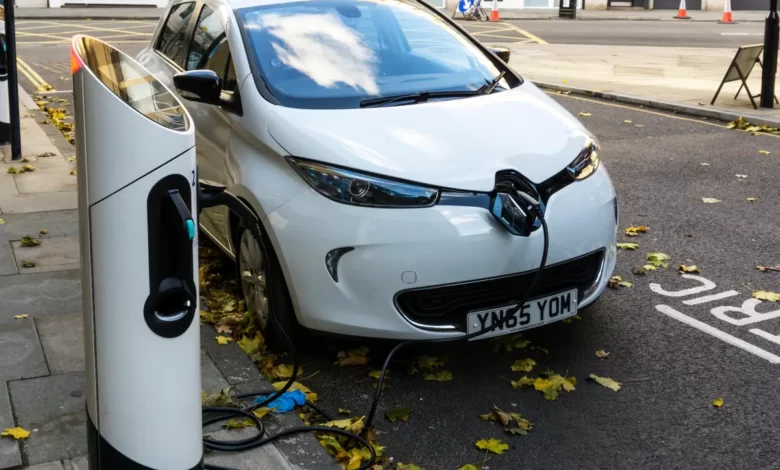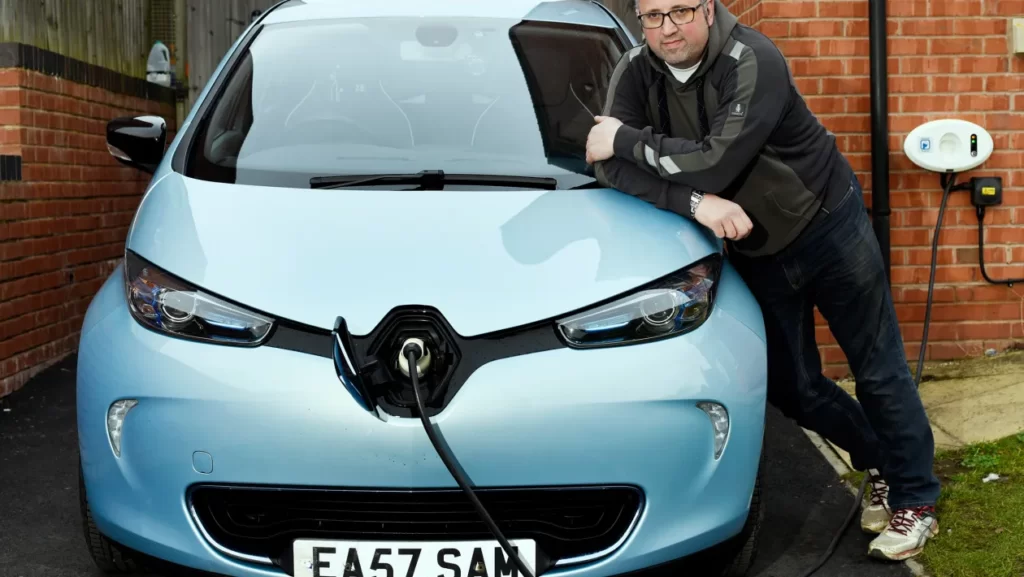Learn Pros And Cons About The All Electric Car

Learn Pros And Cons About The All Electric Car
While electric cars are a relatively new automotive technology, they are although fast becoming popular worldwide.
A conventional car is very different from an electric car. An all electric car is a type of vehicle that uses a mixture of various technologies such as internal combustion engines, gasoline, electric motors, and batteries to run.
All Electric Cars
All electrical cars are set on batteries that provide electricity to an electric motor in the car, the engine turns the transmission, and the transmission spins the wheels. The attempt here is to increase mileage and reduce emissions as much as possible.
Structure
The structure of the electric car is simple, with the major components being: gasoline engine, motor, generator, fuel tank, battery and transmission.
Many of these components are similar, and some even identical to those in conventional cars, but electric cars have different functions and are more convenient for you, your family, and the environment.
Advantages
There are many advantages that are accompanied in an electrical vehicle. Namely, you are saving air of pollutants that would otherwise be spewing into the environment.
Electrical vehicles are 100% emission free, and are free of pollution by-products. They provide their power from batteries, solar, or hydrogen fuel cells.
Electric cars therefore are emission free, compact, lightweight, and they are three times as efficient as gas engines. They also have excellent ranges, and are safe to drive.
Electrical cars combine the best of both conventional and electric cars for a true winner. They bring more clean energy from the electric motor with the long-range power of gasoline engines, really giving you the best of both worlds.
Shortcomings
Just as there are advantages, there are some drawbacks to electrical cars. Electrical cars tend to require long recharge times.
This means that you can not use a car while the battery is charging. Electric cars also tend to have expensive costs associated with them, should they every break down outside the warranty coverage.
Although, the good news is that over the years the repair costs have significantly come down due to manufacturers better understanding the technology, and have become much more adept to building reliable parts.
To decide your next purchase, weigh the advantages and disadvantages in order to identify what is the best electric car for you.
Electric Vehicle Kits: Build Your Own Electric Car
With rising fuel costs, more and more people and are looking for alternatives. One such alternative that is gaining popularity,

especially with the do-it yourself types, are the electric vehicle kits. Anyone familiar with automobiles can now use these kits to convert traditional gas powered vehicles to one powered by electric current.
However, converting a traditional Gas powered vehicle into an electric vehicle can be a very daunting task. Only those who are the very mechanically minded should try this.
To convert the vehicle will require extensive modifications to nearly all-mechanical parts of the car. Everything from the engine to the radiator, heater and air-conditioning, to the gauges on the panel.
On top of that, the electric cars have to be recharged on a regular basis, which means having to purchase or use the services of recharging station. Solar power could be another potential source of power for the electric vehicle.
Can any car be converted into an electric vehicle?
Unfortunately, the answer is no. Not all cars can be converted into an electric vehicle. However, and the most common electric vehicle kit seems to be the Chevy S-10 pick up kit.
For examples to follow just do a search online for Chevy S-10 pickup Electric conversions. Other cars that are good candidates for conversion are the Chevy Geo, especially from 1989 to 1999.
These cars are good potential candidates for an electric vehicle kit conversion. Cars similar to the Chevy Geo Metro, such as the Chevy Sprint, Pontiac Firefly and the Suzuki Swift are also ideal for conversions too.
Are there downsides to using an electric vehicle kit?
Going back a few years, many people associated electric powered vehicles with slowness and a lack of power. But as usual, thanks to technology, significant advances in the electric vehicle have changed all that.
With these electric vehicle kits some cars can reach top speeds of between 70 and 75 mph. nonetheless, converting to electric power still has its drawbacks.
The biggest drawback it is of course the need for recharging the batteries. As an example, the Chevy Geo Metro kit must be recharged every 20 to 40 miles, depending on driving habits and battery quality.
For city driving, this would be ideal. However, for lengthy commutes on the highway, this would not be ideal.
The Chevy S-10 with an electric vehicle kit installed will run a little longer on a single charge. On a single charge, the S-10 should last between 40 and 60 miles.
Again this depends upon the driving habits as well as the size and quality of batteries. Some S-10 models can be equipped with solar powered panels which would in reduced in the need for charging, at least when driving during daylight hours.
Converting vehicles with electric vehicle kits is not a cheap affair. Most conversion kits seem to cost between $8000 to $10,000.
And this does not even include professional installation as well as the cost of the batteries, not to mention access to or the purchase of a charging station.
Quite frankly, with the cost involved of using an electric vehicle kit, it probably wouldn’t be very practical for the average consumer, especially if they do a lot of highway driving.
However, that being said, it probably would be ideal for a back yard mechanic who loves to tinker with cars and has a few bucks to throw around and wants to impress his beer-drinking buddies.
The Benefits Of Electric Vehicles
Electric vehicles have been in existence since way back in 1830, and are becoming popular again with so many people being concerned about pollution and the rising cost of gasoline.
Electric vehicles have been used for many years in the form of golf carts and have also been used as fleet vehicles by servicemen such as meter readers.
However, due to the continued commitment and research efforts of the major car manufacturers, electric vehicles are becoming available today that are practical for normal street use, just as a gasoline powered vehicle would be.
Electric vehicles are popular because, unlike gasoline-powered vehicles, they produce no tailpipe emissions, which are known to cause heavy air pollution.
Another reason for their popularity when compared to gasoline powered vehicles is that they actually use 75% of the power generated by the electricity,
while a gasoline powered vehicle only uses 20% of the power produced by the gasoline, leaving the other 80% to pollute the air, clog up car components, etc.
While there is not a huge market for electric vehicles at this point in time, there are a number of companies that produce them for various reasons, with one of the reasons being NEV’s.
A NEV is also known as a “neighborhood electric vehicle”. These electric vehicles are used in large, gated communities usually, and are normally built to accommodate one or two people. These small electric vehicles can reach speeds of 35 to 40 miles per hour.
In addition to the NEV’s that are available, there are a few car manufacturers that are producing and selling street compatible electric vehicles.
The Dodge TEVan, an electric minivan built by the Chrysler Corporation, is currently being marketed to utility corporations with a price tag of approximately $100,000.
Other companies that produce electric vehicle prototypes for demonstration purposes only include Honda, GM and Ford.
How an electric vehicle works is quite easy to understand. Since the electric vehicle runs on electricity, or a charge, the battery attached to the vehicle is plugged in prior to use in order for the battery to fully charge.
Depending on how low the battery’s charge is, and also on the charging voltage that is used to charge the battery, charging can take anywhere between three and eight hours.
Once charged, the electric vehicle will normally run for between 60 and 200 hours before the battery needs to be recharged.
A limited production electric vehicle can cost up to $40,000, however, many models that are available for everyday use can be purchased for $15,000 to $30,000, depending on the make and model, as well as the options that you desire the electric vehicle to have.
There also exists the possibility to transform a regular gasoline powered vehicle into an electric vehicle; this is done by using a conversion kit, which can be purchased for about $5,000. Electrical vehicles are safe for the environment, economically priced, as well as fun to drive.
New Electric Car Helps Cut Fuel Bills
Electric cars have huge potential to change the auto industry, particularly with rising gas prices, but a new design out of California targets the niche of busy urban drivers.
The Zap Xebra all-electric car is a 40-mph, three-wheeled automobile designed for people who do a lot of in-town driving. Unlike hybrids, the Zap car needs no gas at all – just plug into any conventional outlet.
Zap sees a market with multicar families that are looking for the fuel-savings benefits electrics offer for urban commuting and errands.
Many view it as a great second car for in-town driving, but according to Zap it soon becomes the first car for the entire family.
“Many people buy electric cars because they want to use them when they don’t need their gas cars,” said Alex Campbell, spokesman for Zap.
“What they quickly realize is that most of their daily trips are perfect for electric cars and realistically it becomes the first car.”
Studies show that most driving trips are within 20 miles of home – distances well within the city limit for the Xebra, which can travel up to 40 miles per charge, Campbell said.
When consumers have a choice between driving an electric car and a gas car, they are likely to choose the electric car, Campbell said.
He says Zap’s Xebra project is the offspring of more than three decades of thought and evolution in electric transportation.
The car was created as a breed by itself because the use and purpose of electric vehicles is different than gas cars.
At about 3 cents per mile – compared to 12 cents or more for gas – there is no comparison for cost-conscious consumers. With rising gas prices, people will be much more open to this unique new cost-effective design, he said.
advantages and disadvantages of electric cars,benefits of electric cars on the environment,advantages of electric cars,disadvantages of electric cars,electric cars,paragraph about electric cars,electric cars vs gas cars,electric cars history,Learn Pros And Cons About The All Electric Car




